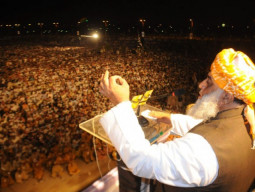
In the mainstreaming of FATA lies the grave of federal ministry of States and Frontier Regions (SAFRON). The federal ministry was established to manage princely states, tribal areas and frontier regions. Most of the princely states are already annexed in Pakistan. Federally Administered Northern Areas (FANA) does not exist anymore as the areas are now presented by the Gilgit-Baltistan province. FATA is the only area which provides justification for the existence of SAFRON ministry. The total development budget allocated to ministry of SAFRON in fiscal year 2015-16 is Rs19.7 billion, which is actually FATA development budget. If FATA is merged into Khyber Pakhtunkhwa (K-P), the ministry of SAFRON will be the only ministry at federal level without any development funds. The federal minister of SAFRON, Mr. Qadire Baloch is also the member of FATA Reforms Committee.
The FATA and K-P secretariats have to merge as well. The Political Agents (PAs) judicial powers have to shift to the judicial organ of the state. So the powers from President, federal ministry of SAFRON, K-P governor and PAs have to be shifted the parliament, K-P assembly, K-P government, judiciary. However, the report of the committee on FATA reforms heavily relies on existing authorities while brushing aside any role of those authorities who are supposed to take over the responsibility of administering FATA in future, like K-P government and judiciary. The report proposes a cabinet level committee for implementation of reforms without any representation from K-P government and superior judiciary. The report should have presented a way out to exterminate the ministry of SAFRON, after merging FATA and K-P. The total strength of the SAFRON ministry is 936, and according to 2015-16 budget estimates, the salary budget of the SAFRON secretariat staff is Rs96 million. Do we need so many employees just to channel the FATA development budget from finance department to FATA Secretariat?
However, the FATA reforms committee is trying to give new life to this dying ministry on the expense of mainstreaming FATA. The report suggests an establishment of reforms unit in the ministry of SAFRON to oversee the entire process of reforms. Another Directorate of Reforms and Transition (DRT) will be established in FATA Secretariat. The directorate will have seven supports offices in each FATA agency and representation in the six frontier regions, to support the Political Agents. When the K-P government will be formally involved in this reforms process? May be at the appropriate juncture, in due course, and in the fullness of time, the famous lines of Humphrey Appleby in ‘Yes Minister’ for not doing something. If the FATA Reforms committee is really serious about mainstreaming FATA, it should recommend immediate constitutional amendment for this purpose. The transitory period should be mentioned in the constitutional amendment bill. The reforms unit should have sufficient representation of superior judiciary, K-P government and FATA parliamentarians. DRT should be established in K-P secretariat or in FATA secretariat but to report to K-P Chief Minister through Chief Secretary of K-P. As suggested by Chief Minister K-P, the FATA should have provincial representation in 2018 general elections and the demarcation of provincial assembly seats should be carried out immediately in FATA. Once the FATA representatives sit in K-P assembly, let them decide what kind of laws they need for their area. The superior courts should be entrusted in the amendment bill for establishing lower courts in areas now FATA, within some specified time. The federal government should immediately decide the 9th NFC award and should allocate 3% more to K-P for development in FATA. There should be a mechanism to ensure that the 3% of NFC is utilised in FATA only.
Many would pose questions on the capacity of the K-P government to carry out this gigantic task. But we have seen the FATA with the worst social economic indicators, which has being administered federally for more than 69 years. The former Chief Secretary of K-P is now secretary of SAFRON ministry, and one wonders how he had less capacity as Chief Secretary K-P and more capacity as secretary SAFRON?
Published in The Express Tribune, October 1st, 2016.
Like Opinion & Editorial on Facebook, follow @ETOpEd on Twitter to receive all updates on all our daily pieces.










































COMMENTS
Comments are moderated and generally will be posted if they are on-topic and not abusive.
For more information, please see our Comments FAQ